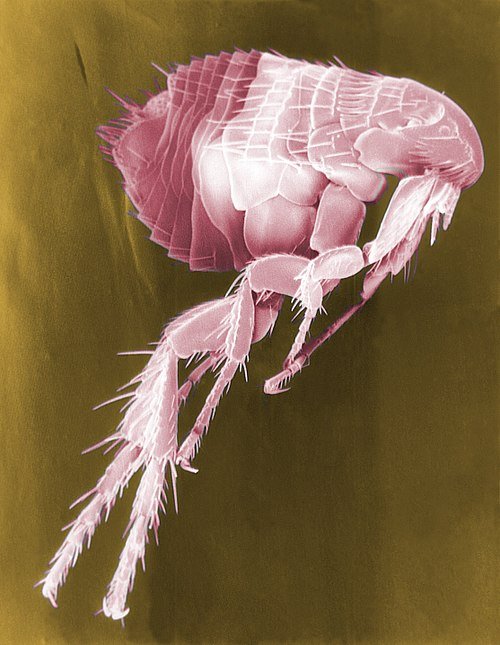When it comes to tiny yet troublesome pests, few can match the resilience and nuisance of fleas. Whether you’re a pet owner or simply someone who wants to maintain a clean and pest-free home, understanding fleas is essential. In this article, we’ll dive deep into everything about fleas—from their life cycle and dangers to prevention, treatment, and home remedies. If you’ve been searching for detailed information on flea flea flea, this guide will help you tackle them effectively.
What Are Fleas?
Fleas are small, wingless insects that survive by feeding on the blood of mammals and birds. Despite their tiny size (about 1/16 to 1/8 inch), they can cause significant discomfort and health issues for both pets and humans. The term “flea flea flea” often arises because these pests multiply rapidly, making infestations challenging to control.
Key Characteristics of Fleas:
Appearance: Flat-bodied, reddish-brown, and capable of jumping up to 200 times their body length.
Feeding: Feed on blood, biting hosts and leaving itchy, red bumps.
Habitat: Prefer warm and humid environments, commonly found in carpets, bedding, and pet fur.
Life Cycle of Fleas
Understanding how fleas reproduce is crucial for breaking the cycle of infestation. Their life cycle consists of four stages
Eggs: Female fleas lay up to 50 eggs a day, which fall off pets and land in bedding, carpets, or furniture.
Larvae: These hatch within a few days and feed on organic debris, including adult flea feces.
Pupae: Larvae spin cocoons and develop into adult fleas in a protective casing.
Adults: Fully grown fleas emerge and seek out hosts for feeding, continuing the cycle.
Since fleas can survive in different stages for weeks or even months, tackling them requires comprehensive treatment strategies.
Signs of Flea Infestation
Recognizing the early signs of flea presence can save you from severe infestations. Look out for:
Excessive Scratching or Biting: Pets constantly scratching their skin.
Red Bumps or Rashes: Small, itchy bites on your skin, particularly around ankles.
Visible Fleas: Tiny, fast-moving insects in your pet’s fur or on furniture.
Flea Dirt: Black specks (flea feces) found on your pet’s coat or bedding.
Dangers of Flea Infestations
Fleas are more than just an annoyance—they can lead to serious health issues:
Skin Allergies: Flea bites can cause allergic reactions in pets and humans.
Diseases: Fleas can transmit tapeworms and bacterial infections.
Anemia: Severe infestations can cause blood loss, particularly in small pets.
Psychological Stress: Continuous itching and irritation affect comfort and quality of life.
Preventing Fleas – A Proactive Approach
Preventing fleas is much easier than treating a full-blown infestation. Here’s how you can stop flea flea flea problems before they start:
1. Regular Pet Care
Use veterinarian-approved flea treatments such as collars, topical solutions, or oral medications.
Bathe and groom pets regularly with flea-control shampoos.
Inspect your pet’s fur often, especially after outdoor activities.
2. Home Maintenance
Vacuum carpets, rugs, and upholstery frequently to remove eggs and larvae.
Wash pet bedding and blankets in hot water weekly.
Use flea sprays or powders in common hiding spots.
3. Outdoor Control
Keep your yard tidy by mowing grass and trimming bushes.
Use pet-safe insecticides or natural repellents in outdoor spaces.
Discourage stray animals from entering your property, as they can carry fleas.
Effective Treatments for Flea Infestations
If you’re already dealing with a flea flea flea infestation, you need a multi-step approach to eliminate them completely:
1. Treat Your Pets
Consult your vet for immediate flea medications.
Use flea combs to physically remove fleas and flea dirt.
Administer flea-preventive treatments regularly.
2. Clean and Treat Your Home
Deep clean your house by vacuuming and steam-cleaning carpets and furniture.
Apply flea-killing sprays or foggers (follow safety guidelines).
Wash all bedding, clothes, and linens thoroughly
3. Professional Pest Control
For severe infestations, hire pest control services for long-lasting solutions.
Professionals use specialized treatments that target all flea life stages.
Home Remedies for Fleas
If you prefer natural methods, try these home remedies to combat flea flea flea issues:
Diatomaceous Earth: Sprinkle on carpets and pet bedding to dehydrate and kill fleas.
Lemon Spray: A natural flea repellent made by boiling lemons in water.
Salt: Acts as a drying agent, killing flea eggs and larvae in carpets
Apple Cider Vinegar: Can be diluted and sprayed on pets as a mild repellent.
Long-Term Flea Management
Once you’ve removed fleas, maintaining a flea-free environment is essential:
Stick to regular flea prevention treatments for pets.
Maintain cleanliness in your home.
Monitor your pets’ health and behavior for early signs of flea activity.
Keep outdoor areas less attractive to fleas.
Conclusion
Fleas may be small, but they can cause big problems if left unchecked. By understanding their life cycle, recognizing signs early, and taking proactive preventive measures, you can effectively keep your home and pets safe from flea flea flea infestations. Consistency is key—regular cleaning, proper pet care, and timely treatments ensure these pesky parasites stay away for good.
